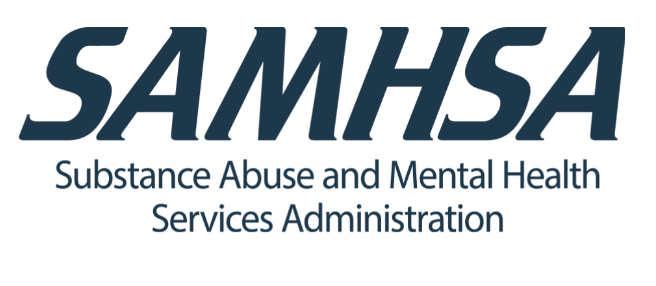Is Kratom Legal in Canada & the USA?
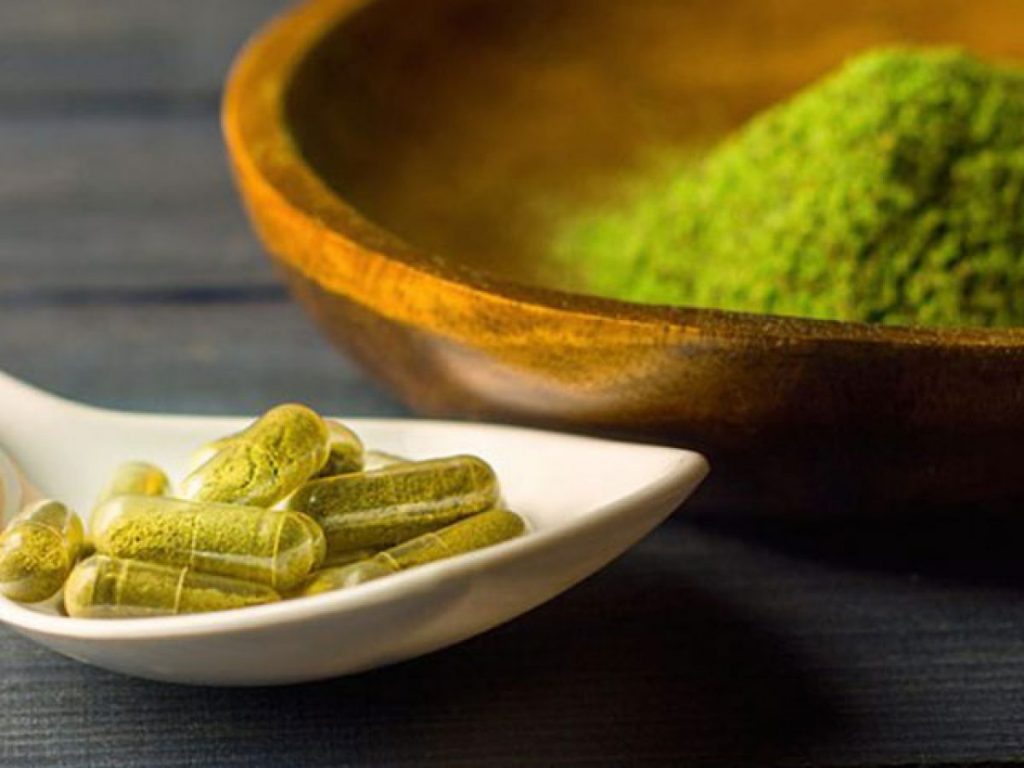
Last Updated: August 17, 2022
What is Kratom?
Kratom is a tropical tree that has a long history of traditional and ceremonial uses in Africa and Southeast Asia. It is also known as: Biak, Ketum, Kakuam, Ithang, Thom, Herbal, and Ketum. Kratom looks like fresh or dried leaves and can be made into a green powder, liquid extract, gum, or pill. Nowadays people chew kratom leaves, brew the dried or powdered leaves as tea, eat them in food, or smoke them. Traditionally in Africa and Southeast Asia kratom’s leaves are chewed or consumed as a powder to help reduce fatigue, in particular by seamen and manual laborers on rubber plantations, and also culturally by individuals whose religious practices prohibit alcohol consumption.
A member of the coffee family, kratom has long been used to relieve pain and ease opiate withdrawal in parts of Asia. It is available in many forms, including dried/crushed leaves, powder, capsules, tablets, liquids, and gum/resin; the most common route of administration is ingestion as a brewed tea, although smoking, chewing the raw leaves, and the ingestion of extracts have also been reported. The substance has become an increasingly popular alternative therapy and drug of abuse and is readily available on the recreational drug market.
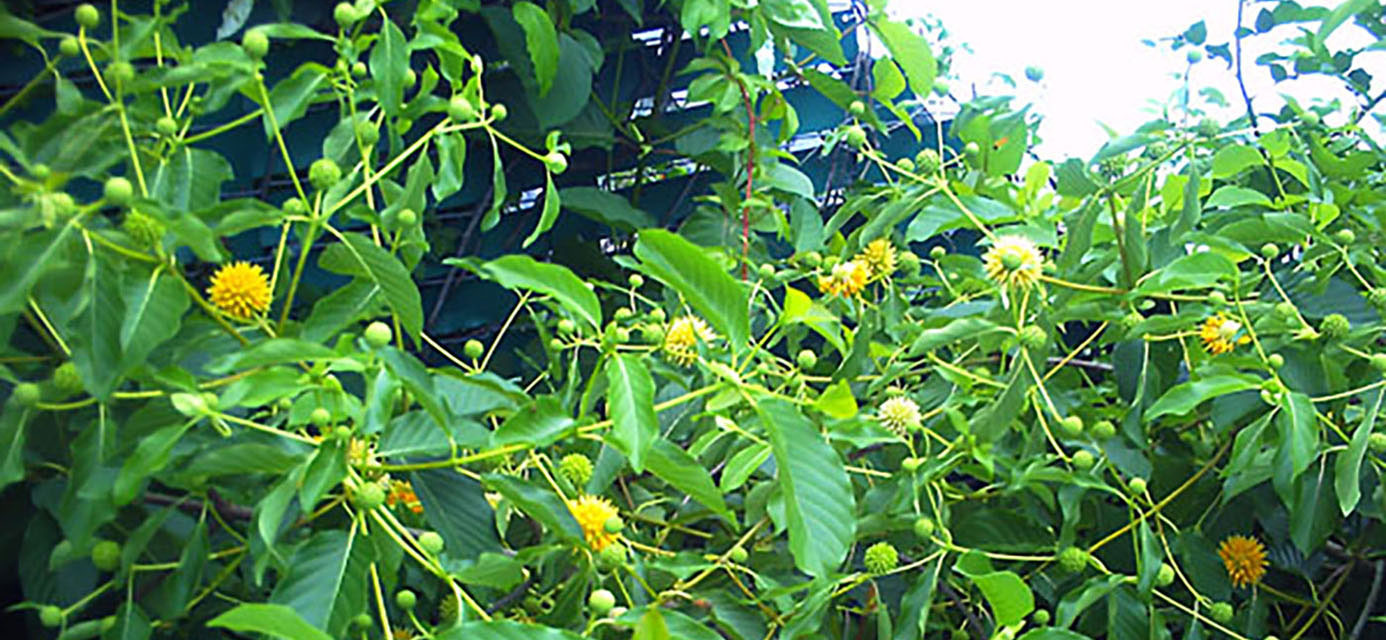
Is Kratom legal?
According to FDA research, kratom is an agonist that binds to mu-opioid receptors in the brain. These are the same receptors that are activated when you take opioids, like prescription painkillers or heroin.
Kratom is, essentially, a natural opioid. Like all opioids, it comes with a risk of tolerance, dependence, and withdrawal.
It’s thought that mitragynine and 7-hydroxymitragynine may help control pain by attaching to these opioid receptors, which, in turn, reduce pain perception.
Kratom has gained popularity as an alternative to opioid pain medications like Vicodin (hydrocodone) and OxyContin (oxycodone). In many cases, kratom is used to manage chronic pain associated with conditions such as arthritis and fibromyalgia.
Kratom Is Legal In The USA, But…
In 2016 DEA (Drug Enforcement Administration) announced its intent to temporarily place mitragynine and 7-HMG into Schedule I “to avoid an imminent hazard to public safety.” Prior to this announcement, kratom was regulated as an herbal product under FDA and DEA policies and, as such, was considered to be a legal substance in most of the U.S. Placing a drug into Schedule I means that in the DEA’s view, the drug has “no currently accepted medical use and a high potential for abuse.” Emergency scheduling is usually for a period of 2 years (with a 1-year extension available) while the DEA gathers additional information, after which a more permanent classification may be implemented using the formal administrative rulemaking process. Emergency-scheduling is only for a Schedule I drug.
In 2018, the website STAT reported that the Department of Health and Human Services had recommended a ban on the chemicals found in kratom.
As of 2020, federal regulation remains on hold as the debate over the substance continues. The FDA has issued warnings to companies that sell kratom in the U.S. and illegally market the drug as an herbal supplement to treat addiction, anxiety, pain, and other health issues. Only FDA-approved drugs can make such claims. The future legal status of the drug remains to be seen, but legally in the USA kratom is considered to have “no currently accepted medical use and a high potential for abuse.”
Is Kratom Legal in NY and New York State?
Kratom is legal in NY and New York State. In recent years, several bills were intending to ban kratom altogether or set an age limit for kratom sales. All of these bills died in committee. In 2017 and 2018, there were three different bills on kratom in New York State. Two of them proposed an age limit for kratom sales and intended to ban kratom for those under 18. The third bill wanted to completely ban kratom in New York State.
In 2019, several bills were aiming to have an age limit on kratom sales, as well as the first bill to regulate kratom in New York State. All of these bills died in committee.
None of the 2019 bills intended to ban kratom in New York State. However, that’s not a reason for kratom supporters and advocates to sit back and relax. On multiple occasions, there have been attempts to ban kratom. Moreover, the media does not shy away from sharing negative kratom stories in the state.
In fall 2017, the media attributed a young police officer’s death in Albany, NY, to kratom. His cause of death was hemorrhagic pulmonary edema, which basically means swelling and fluid buildup in his lungs. However, the autopsy also revealed a concentration of Mitragyna speciosa (Kratom) in his blood.
While pulmonary edema frequently results from congestive heart failure and can lead to cardiac arrest, his cause of death was stated to have been kratom. This is blatant misinformation as medically both the cause and result of pulmonary edema have nothing to do with kratom.
In another instance, a JFK customs officer was caught stealing cash from travelers. The media was quick to state that it was to fund his drug, more specifically, kratom, addiction. Kratom isn’t a drug, and it is legal in New York state.
Instances like the ones above remind that if you decide (at your own risk) to try kratom, it is important to only buy pure and lab-tested kratom from trustworthy vendors to avoid any contamination and the risk of attracting unfavorable media attention. Moreover, kratom buyers need to be aware of their behavior and actions as those can be scrutinized too.
Will New York Ban Kratom?
There is no indication that kratom will be ban in New York. Lawmakers are working to adopt the KCPA, which will help regulate the industry. If this act passes it will address all the issues that the kratom market currently has, such as age restrictions, contamination, and labeling. So, no, it does not look like New York will ban kratom but make it a more regulated industry.
Suffolk County already bans sales of kratom to individuals under 21, and New York State should follow suit to protect individuals from this substance. Tennessee also bans sales of kratom to individuals under 21, while New Hampshire and Illinois ban sales of kratom to individuals under 18. Sales of kratom are banned in Alabama, Arkansas, Indiana, Vermont, Rhode Island, Washington, D.C., and Wisconsin.
Is Kratom Legal in Canada?
There isn’t a ban on kratom in Canada, neither it is classified as one of the illegal substances, but it may not be the same in the near future.
In Canada, Health Canada and the Canadian Food Inspection Agency (CFIA) are known for governing controlled substances. The latter is a scientifically based regulator. They aim to safeguard food, plants, and animals that can enhance the well-being and health of the people living in Canada, its economy, and the environment.
Health Canada, on the other hand, works by establishing the standards of regulating the nutritional quality of all kinds of food sold in the country. The food sold in Canada must be on par with the Food and Drugs Act and Regulation, along with the Consumer Packaging and Labelling Acts and Regulations. In addition, commodity-specific rules also need to be taken into consideration.
Health Canada will be determining the product classification, in the beginning, to see if the item is a Natural Heal Product (NHP) or a Food. The classification is done based on the perception of the usage history, product format, product representation, and composition. After classifying the product, the proper regulatory framework is used. Products that are classified into the food category will have to follow the Food and Drug Regulations as set by the CFIA. They will be handling the enforcement and compliance requirements related to every food item. In the case of NHP, regulations will be as per the Natural health Products that Health Canada will enforce.
As per Health Canada, kratom is considered to be a herbal product that poses a serious threat to the health if inhaled or swallowed. Side effects would be an excessively rapid heartbeat, liver toxicity, seizures, nausea, and drowsiness. Health Canada has also linked kratom to causing stimulant-like and narcotic effects. Kratom could also be subject to dependence and abuse. Though it is a natural health product, Health Canada does not authorize its sale.
Is Kratom legal In Other Countries?
As we already mentioned above, the Food and Drug Administration (FDA) has not approved kratom tea or kratom-based products for any medical purpose. Moreover, the Drug Enforcement Agency (DEA) has listed kratom as a drug of concern.
In European countries, such as Denmark, Lithuania, Poland, Latvia, Romania, and Sweden, kratom use and possession are controlled.
Other countries that control kratom under their narcotic laws include Malaysia, Myanmar, and Australia. Meanwhile, New Zealand controls kratom under its Medicines Amendment Regulations act.
One reason why kratom is restricted in many areas is that no evidence shows that kratom is safe or effective for health purposes.
In addition, it has the potential to be abused, can be addictive, and has been linked to serious health consequences, including death. One recent review of data from the National Poison Data system found that more than 2,312 people have reported that kratom has made themselves or someone else ill. Moreover, there have been 44 reported deaths linked to kratom use, with most of them involving kratom products laced with other ingredients.
What the Experts Say
Proponents of kratom suggest that the herb could serve as a solution to the opioid crisis, both by offering another option for pain relief and by aiding those struggling to overcome opioid addiction.
Other experts say that it’s not the magic solution some people claim it is.
Published research on kratom’s possible benefits as a pain reliever and opioid alternative is very scarce.
Using results of a survey of more than 2,700 self-reported users of the herbal supplement kratom, sold online and in smoke shops around the U.S., Johns Hopkins Medicine researchers conclude that the psychoactive compound somewhat similar to opioids likely has a lower rate of harm than prescription opioids for treating pain, anxiety, depression and addiction.
In a report on the findings, published in the Feb. 3 issue of Drug and Alcohol Dependence, the researchers caution that while self-reporting surveys aren’t always entirely reliable, they confirmed that kratom is not regulated or approved by the U.S. Food and Drug Administration (FDA), and that scientific studies have not been done to formally establish safety and benefits. They say that U.S. drug agencies should seek to study and regulate rather than ban kratom sales outright because of its seemingly safe therapeutic potential, and as a possible alternative to opioid use.
The American Kratom Association (AKA), a consumer advocacy group, estimates that 10-16 million people in the U.S. regularly use kratom by either eating its ground leaves in food or brewing them in tea. Kratom is a tropical plant related to coffee trees, and grown mainly in Southeast Asia. It contains a chemical called mitragynine, an alkaloid that acts on the brain opiate receptors and alters mood. In Asia, where use has long been widespread, people use it in small doses as an energy and mood booster, similar to coffee use in the West. They use larger amounts for pain, or recreationally like beer and wine.
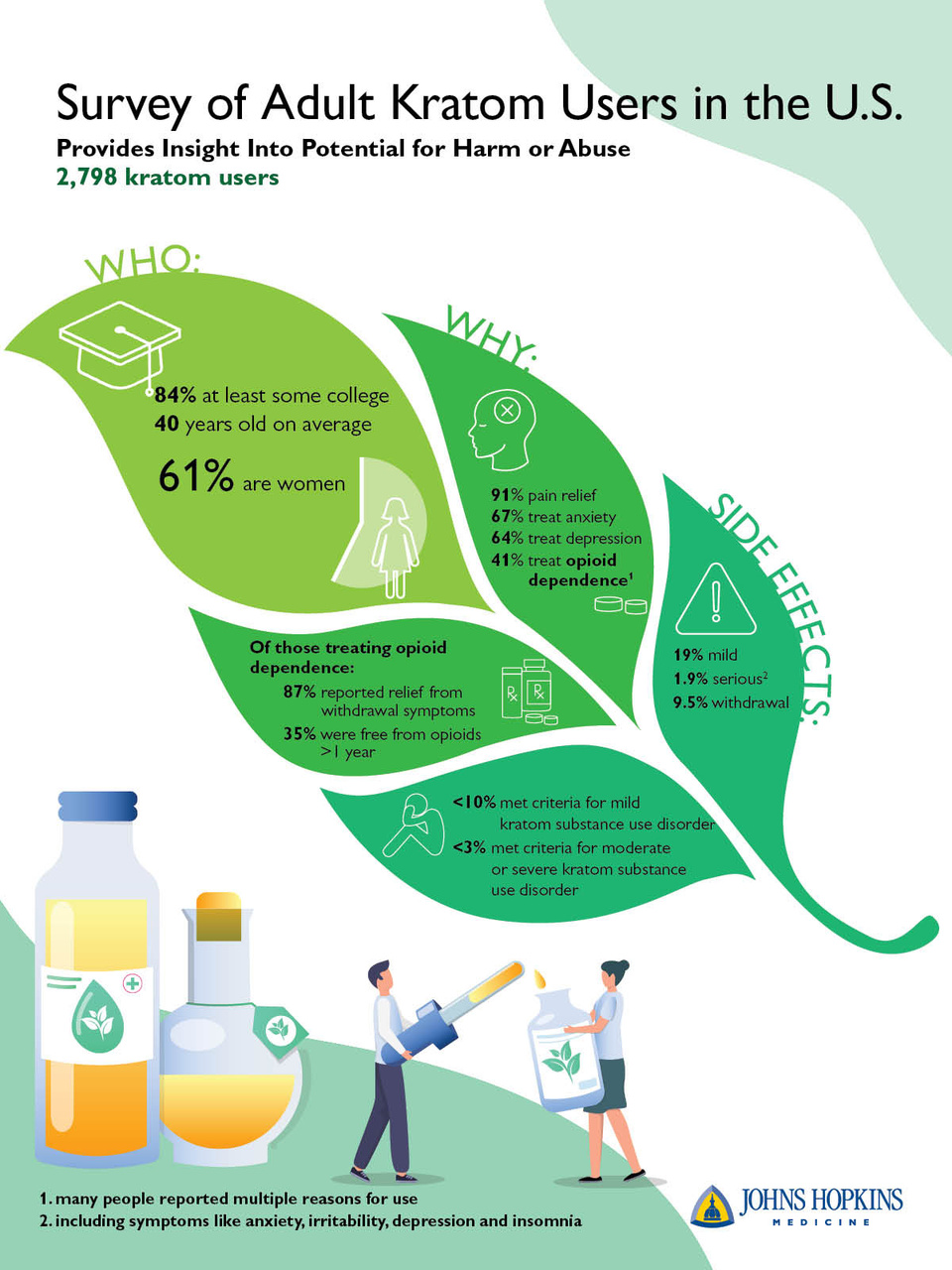
Common Side Effects
Although case reports have reported drowsiness, irritability, palpitations, high blood pressure, poor concentration, insomnia, hypothyroidism, seizures, psychosis, hepatitis, and coma in people using kratom, it’s unclear how much is directly attributable to kratom.
Risks appear to be higher when it’s taken in concentrated extracts (which have a higher potency), mixed with other psychoactive substances, drugs, or adulterants, or when it’s taken by people with alcohol use disorders, a history of heroin use, or certain health conditions.
Potential health effects include:
- Anorexia
- Calmness
- Constipation
- Discoloration of the cheeks
- Dry mouth
- Euphoria
- Increased social behavior
- Increased urination
- Insomnia
- Itching
- Loss of appetite
- Nausea
- Psychotic symptoms (hallucinations, delusion, confusion)
- Sensitivity to sunburn
- Sweating
- Talkativeness
According to reports by U.S. poison control hotlines, calls involving kratom overdoses rose 50-fold from 2011 to 2016. In most cases, the kratom was laced with other drugs. If you or someone you love are experiencing any signs of overdose, call 911 or the Poison Control helpline (800-222-1222) immediately.
Kratom Withdrawal
If someone you love is using kratom, it’s important to be on the lookout for the common side effects (such as talkativeness, increased social behavior, itching, changes in appetite, sweating) as well as any unusual or extreme shifts in mood, behavior, appearance, and overall health. Kratom comes with a risk of tolerance, dependence, and withdrawal. Kratom users can build tolerance, or needing more to achieve the desired effect, and experience symptoms of withdrawal when they stop taking the drug.
How Long Does Kratom Stay in Your System?
More research is needed to determine the exact half-life of kratom. Like other substances, how long kratom stays in your system will depend on the following factors:
- Age
- Body fat
- Frequency of use
- Genetics
- Metabolic rate
- Type of kratom
- Water and food intake
Kratom’s main active alkaloid, mitragynine, can be detected in a urine test.
Kratom Addiction
The DEA states that kratom abuse can lead to addiction and can result in psychotic symptoms, including hallucinations, delusion, and confusion.
Not everyone will experience addiction in the same way, but there are several hallmark signs and symptoms, including tolerance, dependence, and withdrawal. Other common signs of addiction include:
- Changes in friends
- Changes in mood, sleeping patterns, weight, and activity levels
- Financial trouble
- Loss of interest in hobbies, social activities, or job or school
- Secretiveness, stealing, and/or lying
- Keeping stashes of drugs or paraphernalia
- Trouble scaling back or stopping drug
- Spending vast amounts of time spent getting, using, and recovering from the drug
Kratom Withdrawal Effects
People who take large doses of kratom several times per day have an increased risk of moderate to severe withdrawal symptoms. In general, however, withdrawal symptoms are milder in comparison to opioid withdrawal and may include:
- Decreased appetite
- Diarrhea
- Difficulty sleeping
- Fever
- Hot flashes
- Increased muscle spasms and pain
- Mood disturbances
- Runny nose
- Watery eyes
What is Kratom Tea?
What is kratom tea?
Kratom tea is traditionally made by brewing leaves from the kratom tree. Traditionally, field workers would chew on kratom leaves to help increase their energy and endurance, aid their heat tolerance, and relieve fatigue. These leaves were also used as an herbal remedy to treat various illnesses, including coughing, diarrhea, diabetes, and high blood pressure. They were likewise used as a substitute for opium — a potent pain reliever — or for opium withdrawal.
Kratom leaves that are used to make kratom tea contain more than 40 active compounds, although the main ones are mitragynine and 7-Hydroxymitragynine. These compounds act upon various receptors in the brain, causing effects similar to those of stimulants and opioid pain relievers, depending on the dosage.
In small doses between 1–5 grams, kratom acts as a stimulant and appears to increase energy, causing people to feel more alert and social.
In higher doses between 5–15 grams, kratom appears to have a sedative effect, similar to that of opioid pain relievers, such as morphine and codeine, causing people to feel tired, calm, and euphoric.
The higher dosage range is traditionally used to treat conditions like diarrhea and cough. It’s likewise used to treat opioid withdrawal symptoms.
In very high doses above 15 grams, kratom’s sedative effects are much higher and may cause people to lose consciousness.
Kratom leaves from different parts of Southeast Asia have varying levels of mitragynine. Malaysian kratom leaves have a much lower concentration at 12%, compared with 66% for Thai kratom leaves.
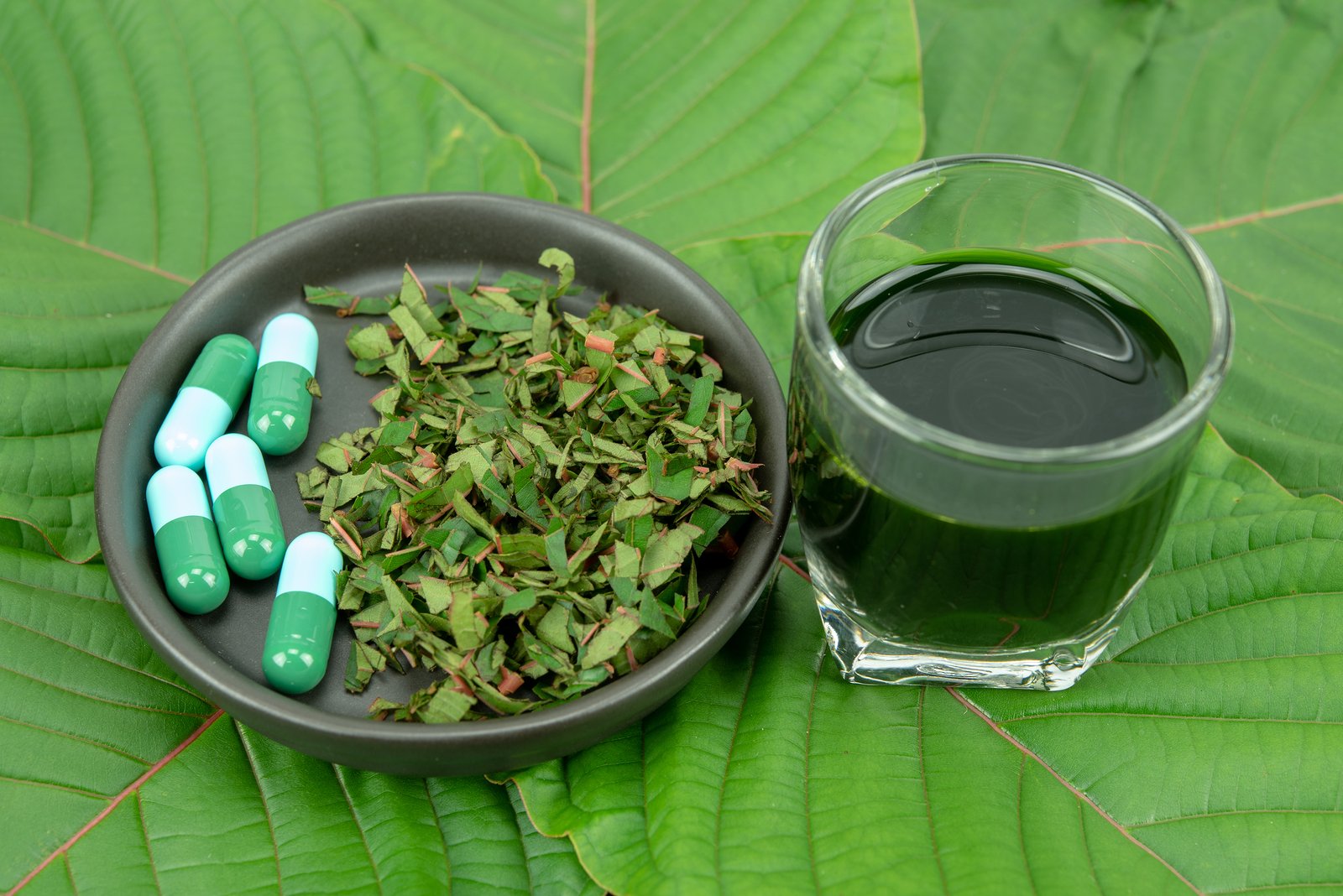
What is Kratom CBD?
CBD Kratom is one of the largest companies, which offers a selection of CBD and Kratom products. CBD Kratom products are grown organically in Colorado and Oregon and our Kratom is sourced from Southeast Asia.They carry everything from CBD oils and bath products to over 50 strains of Kratom. We guarantee that no matter your needs, we have the right products to help. Their online shop sells Kratom products, which ate claimed to be lab-tested several times for purity and consistency before it’s sold in our stores.
How hard is kratom on the liver?
“There are risks associated with using kratom, and liver injury are on the list of things that are a potential consequence of using it,” said William Eggleston, a clinical assistant professor at the Binghamton University-State University of New York’s School of Pharmacy. He wasn’t involved with the study but reviewed the findings. Depending on different factors, kratom-induced liver damage may or may not be reversible. Some factors affecting the outcome of treatment may include:
- The existence of underlying chronic medical issues
- The ability to stop all use of kratom immediately
- The existence of withdrawal symptoms due to stopping the use of kratom
- The existence of kratom addiction may contribute to a return to active kratom use
- The amount of damage done to the liver by the use of other substances
- The length of time spent using kratom
- The dose of kratom used regularly
In general, when liver damage is noticed, the cause is correctly identified, and the individual immediately undergoes medical treatment, liver test results can return to normal in time. To maintain those results, however, it is important to maintain abstinence from kratom abuse and to do the work necessary to make healthier choices going forward.
How to Get Help
Living with pain isn’t easy. If you live with pain, you may already be all too familiar with the profound effect it can have on your quality of life. If you or a loved one are struggling with substance use or addiction, contact the Substance Abuse and Mental Health Services Administration (SAMHSA) National Helpline at 1-800-662-4357 for information on support and treatment facilities in your area.
NOVO Detox Los Angeles is a 24/7 medical detox and residential rehab center. We have state-of-the-art facilities, proven detox medication, holistic therapies, and a staff with over four decades of inexperience. Our main priority is to provide medical safety, nourishment, and comfort to our patients during their detox and treatment. Contact Us Today! You may verify your insurance online.
If you are considering trying kratom, you should speak with your healthcare provider first. Some pain clinics utilize complementary and alternative therapies in conjunction with traditional medical approaches for pain treatment and management. For example, mindfulness (and other mind-body practices) may help some people remain pain-controlled despite the challenges of everyday life. If you’ve been using kratom to self-medicate and have noticed that it has begun to take over your life, don’t wait to get help. A trusted healthcare professional can help guide you toward the path of recovery.


